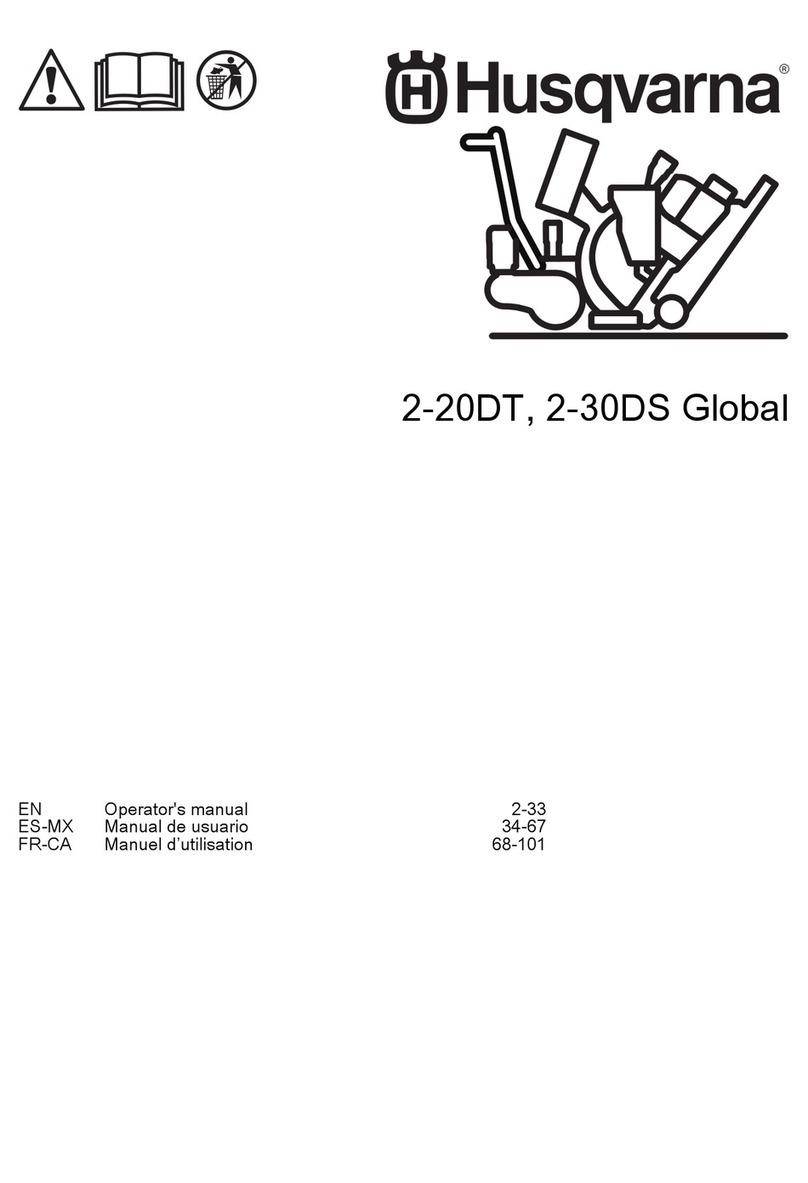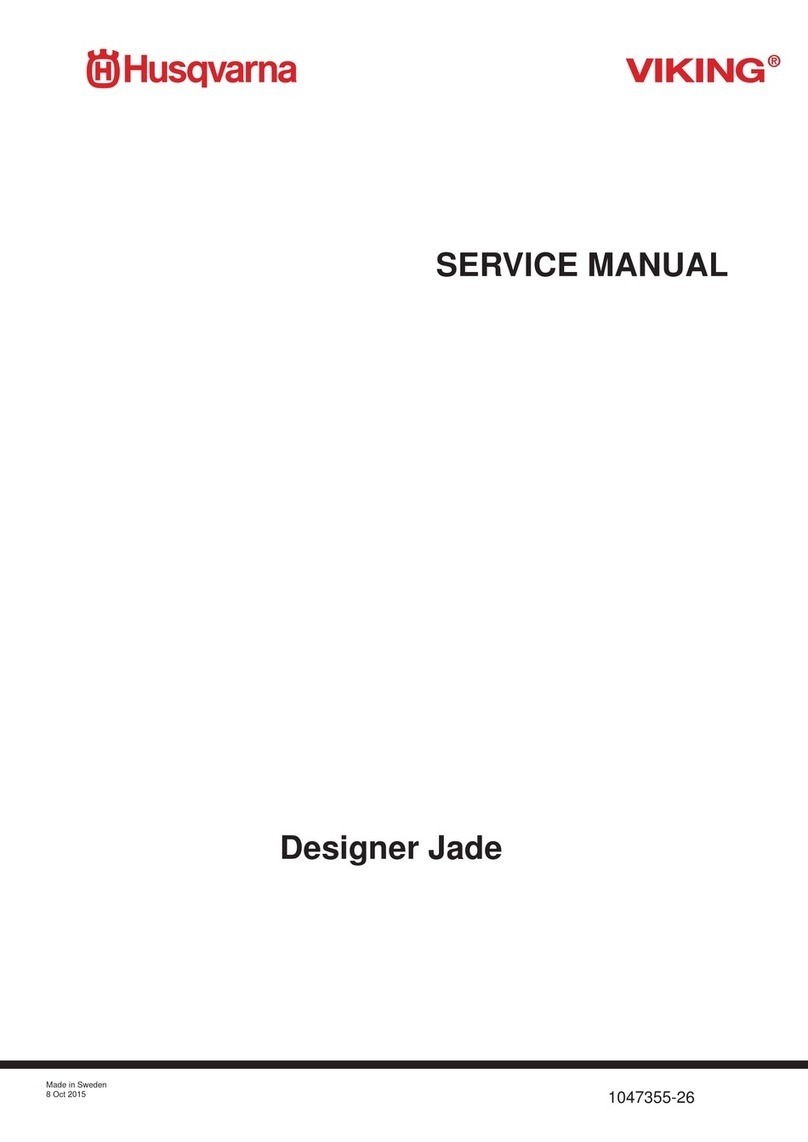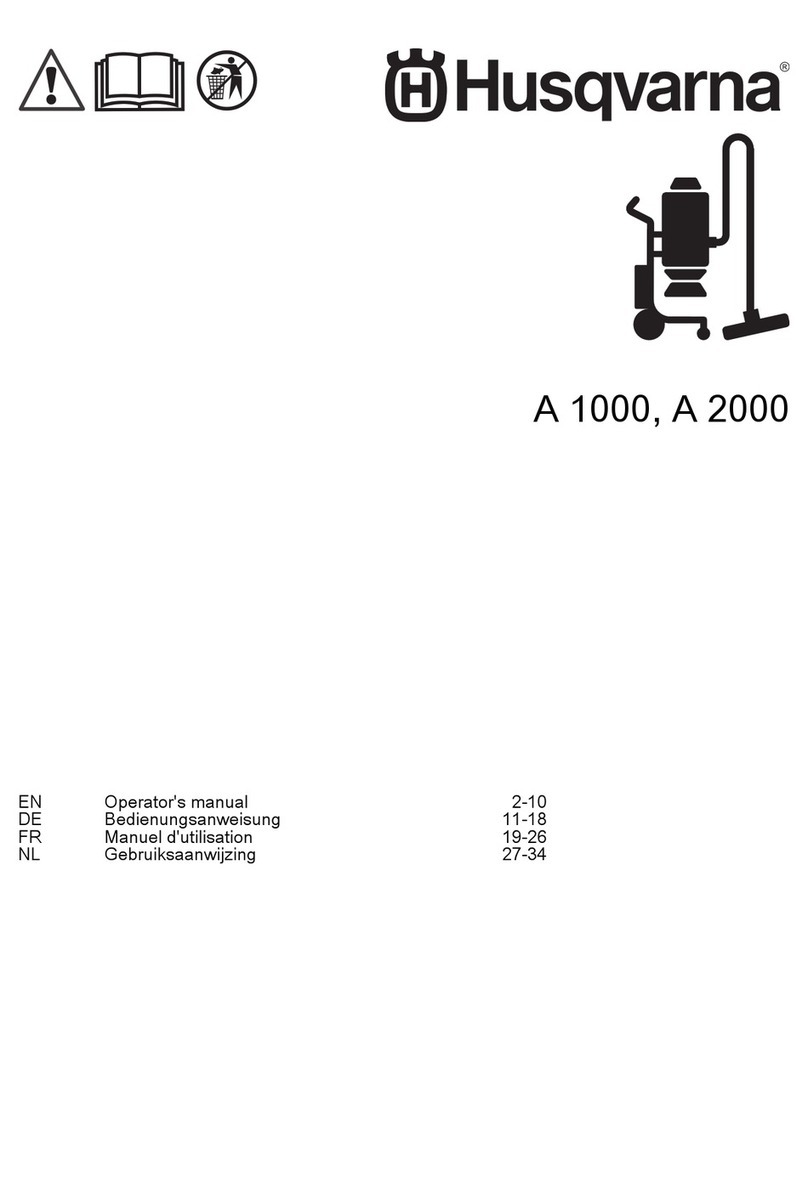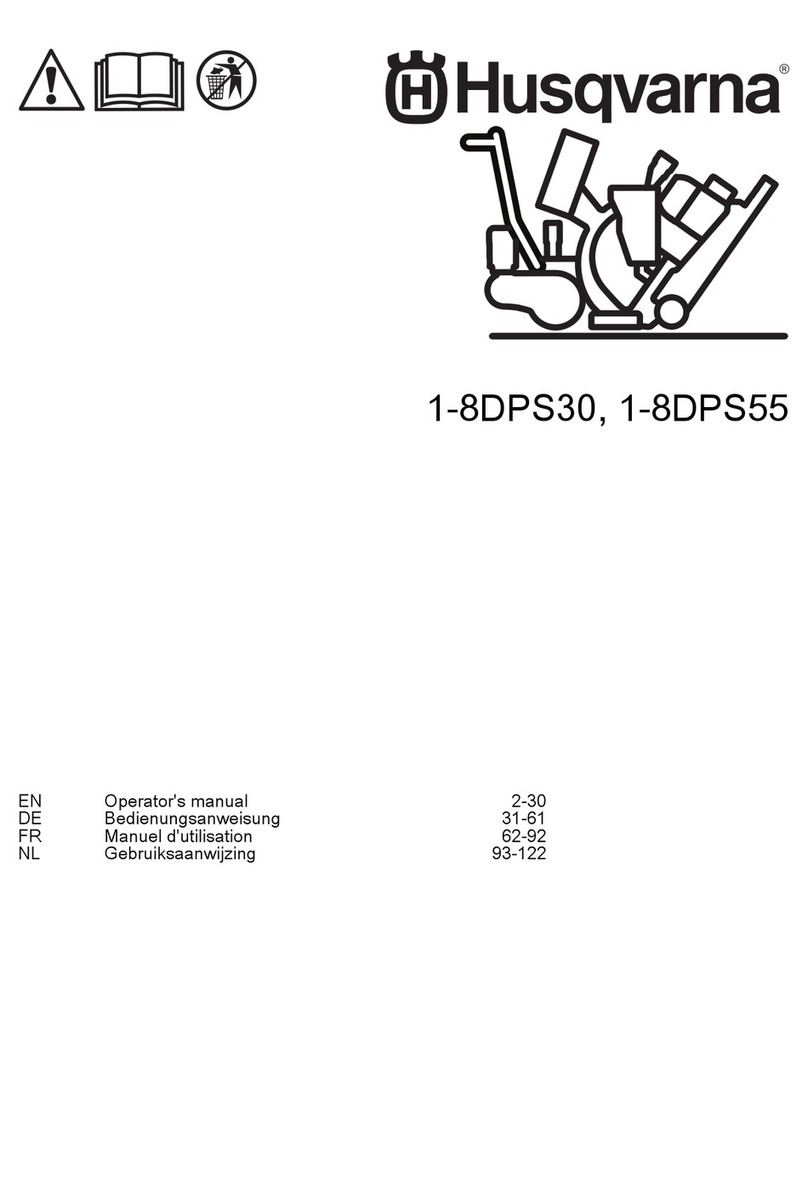
English – 9
OPERATING
Always use common sense
It is not possible to cover every conceivable situation you can
face. Always exercise care and use your common sense. If
you get into a situation where you feel unsafe, stop and seek
expert advice. Contact your dealer, service agent or an
experienced user. Do not attempt any task that you feel
unsure of!
Work safety
Work area safety
The machine’s risk area
Nobody is permitted to be within the machine’s risk area when
work is underway. This also applies for the operator.
The working area is limited by the machine’s reach, however,
the risk area varies depending on working method, work
object, surface etc. Study possible risks before starting work.
If conditions change during the course of the work, the risk
area must be redefined.
Workplace
• Define and cordon off the risk area. Nobody is permitted
to be within the machine’s risk area when work is
underway.
• Ensure that the working area is sufficiently illuminated to
create a safe working environment.
• The machine can be remote controlled over long
distances. Do not operate the machine unless you have
clear supervision of the machine and its risk area.
• Never start working with the machine until the working
area has been cleared of obstacles.
• Be on the alert when working in environments where there
is a substantial risk of slipping due to unevenness, loose
material, oil, ice or suchlike.
• Inspect ground conditions, load-bearing structures etc. to
prevent materials, machines and staff falling and deal with
any risks there might be before starting work.
• When working at a height, for instance on roofs, platforms
and the like, increase the size of the risk area. Define and
cordon off the risk area at ground level and ensure that no
material can fall down and cause injury.
• Do not use the machine in environments where there is a
risk of explosion. Take the risk of spark formation into
account when working in flammable environments.
• Always check and mark where electricity cables and
pipelines are routed.
• The air in confined spaces can rapidly become harmful to
health due to, for example, dust and gases.Use protective
equipment and ensure that there is satisfactory
ventilation.
Personal safety
•Never use the machine if you are tired, if you have drunk
alcohol, or if you are taking medication that could affect
your vision, your judgement or your co-ordination.
• Wear personal protective equipment. See instructions
under the heading ”Personal protective equipment”.
• An incorrect manoeuvre or unforeseeable incident can
result in collapse. Never stand underneath the work
object.
• Never stand where there is a risk of being crushed. The
machine can rapidly change position. Never stand
underneath a raised arm, even if the machine is turned off.
• Reduce the risk when working alone by making sure that
an emergency alarm is available via mobile phone or
other equipment.
• People and animals can distract you causing you to lose
control of the machine. For this reason, always remain
concentrated and focused on the task. Never allow
children to operate the machine.
• Always work in a manner that permits easy access to the
emergency stop.
Hydraulic safety
• Risk of burn. The hydraulic oil, the hoses and the
connections can reach very high temperatures with or
without the tool connected. Use appropriate personal
protective equipment.
• Before performing operations on the hydraulic system,
wait until the machine has cooled down.
• Check that all couplings, connections and hydraulic hoses
are in full working order.
• Keep the hydraulic hoses and couplings free from dirt.
• Do not misuse hoses.
• Do not use hoses that are distorted, worn or damaged.
• Check that none of the hoses are rubbing against sharp
edges. Be alert to the risk of abrasive jets.
• Adjust the length of hydraulic hoses so that they are never
entirely stretched.
• Ensure that the hose is not twisted during mounting.
• Avoid severe bends in the hose.
• Check that the hoses are connected correctly to the
machine and that the hydraulic couplings lock as intended
before pressurising the hydraulic system.The couplings
are locked by turning the outer sleeve on the female
coupling so that the slot moves away from the ball.
!
WARNING! Unauthorized modifications and/
or accessories may lead to serious injury or
death to the user or others.
Do not modify this product or use it if it
appears to have been modified by others.
Never use a machine that is faulty. Carry out
the checks, maintenance and service
instructions described in this manual. Some
maintenance and service measures must be
carried out by trained and qualified
specialists. See instructions under the
heading Maintenance.
Always use genuine accessories.






































